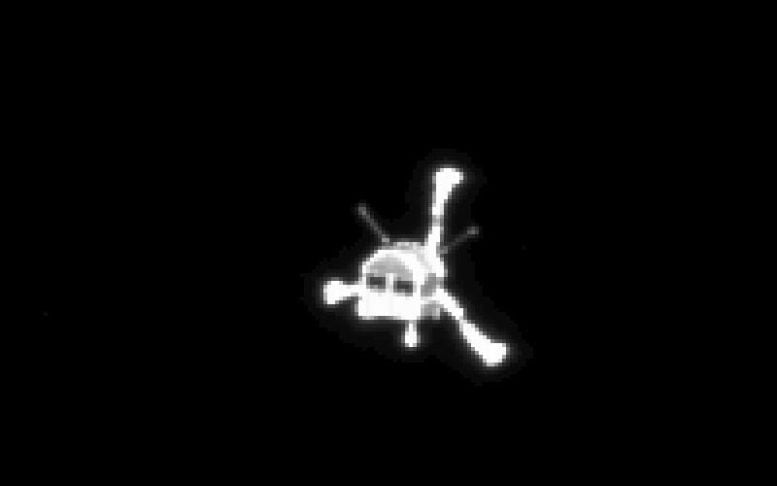
The Onboard Scientific Imaging System (OSIRIS) on the European Space Agency’s Rosetta spacecraft captured this parting shot of the mission’s Philae lander after its separation from the mother ship on November 12, 2014. The image was taken with the OSIRIS narrow-angle camera. Credit: ESA/Rosetta/OSIRIS/MPS/UPD/LAM/IAA/SSO/INTA/UPM/DASP/IDA
The European Space Agency has confirmed that the Philae lander has successfully reached the surface of comet 67P/Churyumov-Gerasimenko. This is the first time in history that a spacecraft has made a soft landing on a comet.
The Onboard Scientific Imaging System (OSIRIS) on the European Space Agency’s Rosetta spacecraft captured this parting shot of the mission’s Philae lander after its separation from the mother ship on November 12, 2014. The image was taken with the OSIRIS narrow-angle camera.
Rosetta and Philae had been riding through space together for more than 10 years. Philae is the first probe to achieve soft landing on a comet, and Rosetta is the first to rendezvous with a comet and follow it around the sun. The information collected by Philae at one location on the surface will complement that collected by the Rosetta orbiter for the entire comet.
Rosetta is a European Space Agency (ESA) mission with contributions from its member states and NASA. Rosetta’s Philae lander is provided by a consortium led by the German Aerospace Center, Cologne; Max Planck Institute for Solar System Research, Gottingen; French National Space Agency, Paris; and the Italian Space Agency, Rome. NASA’s Jet Propulsion Laboratory (JPL), a division of the California Institute of Technology, Pasadena, manages the U.S. participation in the Rosetta mission for NASA’s Science Mission Directorate in Washington. Rosetta carries three NASA instruments in its 21-instrument payload.
OSIRIS was built by a consortium led by the Max Planck Institute for Solar System Research, Gottigen, Germany, in collaboration with the Center for Studies and Activities in Space, University of Padua, Italy; the Astrophysics Laboratory, Marseille, France; the Institute of Astrophysics of Andalucia, Spain; the Scientific Support Office of the European Space Agency, The Netherlands; the National Institute for Aerospace Technology, Torrejon de Ardoz, Spain; the Technical University of Madrid, Spain; the Department of Physics and Astronomy of Uppsala University, Sweden; and the Institute of Computer and Network Engineering of the Technical University, Braunschweig, Germany. OSIRIS was financially supported by the national funding agencies of the German Space Agency, Cologne, Germany; National Center for Space Studies, Paris, France; Italian Space Agency, Rome; Ministry of Education and Science, Madrid, Spain; the Swedish National Space Board, Solna, Sweden; and the European Space Agency Technical Directorate, Paris, France.

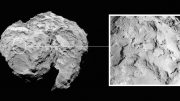
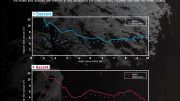
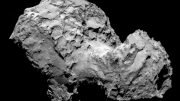
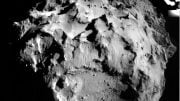
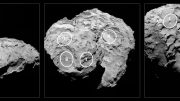
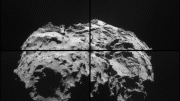
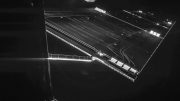
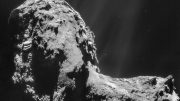
Be the first to comment on "Philae Lander Makes Soft Landing on Comet 67P"